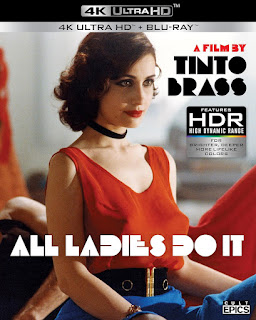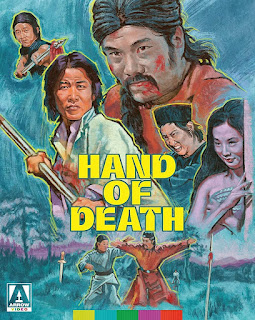The Shape of Night
With all the hubbub surrounding Gen-Z’s delicate sensibility involving sex on screen, The Shape of Night, released in 1964, would likely require a strong trigger warning. Produced at time when Japanese studios were leaning towards more overt scenes of sex and violence to compete with an encroaching TV audience, director Noboru Nakamura crafts a technically beautiful film that brutalizes its central female character both physically and emotionally for the entire run time. A noir morality play set in the world of prostitution and pimps, The Shape of Night doesn’t condone this “degenerate” lifestyle, but makes it clear that some choices are more complicated than a simple right and wrong.
Yoshie becomes quickly infatuated by Eiji, a regular customer she serves at the local bar; so much so that she moves into his tiny apartment and becomes their sole source of income. By the time Eiji’s career as a low-level yakuza is revealed, Yoshie is too deep in love to care. But the suggestion that she start turning tricks to pay off his debts quickly steamrolls into a threat by his superiors. Yoshie becomes a full-time streetwalker against her will, too conflicted by her emotions toward Eiji to leave when offered a chance to run away with a regular client…and too frightened of the possible consequences for them all.
While prostitution was a common enough plot device in European and Japanese films at the time, offering a chance to provide titillation under the guise of a cinematic reprimand, The Shape of Night doesn’t get bogged down in sophistries. For all its disturbing moments of abuse and victimization, Noboru’s film never expects its audience to enjoy them. In fact, the most powerful moment is an unexpected role reversal, focusing on Eiji’s ineffectual rage as Yoshie is gang-raped to keep her in line. Her agonizing emotional explosion comes later, followed by a cold emptiness that helps her survive.
Meanwhile, the film’s visual palette is a kaleidoscope of purple, blues and greens, creating a dark carnival of set-bound city streets. It’s a striking contrast to the ugliness of Yoshie’s daily existence…and all the more powerful because of it. Sex here is simply a currency for survival; it’s lost all aspects of eroticism. But it remains a vital part of the human condition, which is really The Shape of Night’s focus in the end. Something every generation comes to realize eventually.
Radiance presents The Shape of Night in an impressive 3000-copy limited edition Blu-ray complete with liner notes, an interview with Nakamura’s son and visual essay on the evolution of Shochiku studios in the 1960s.




Comments
Post a Comment